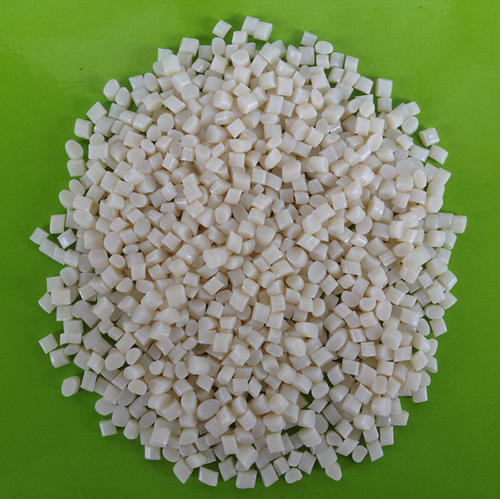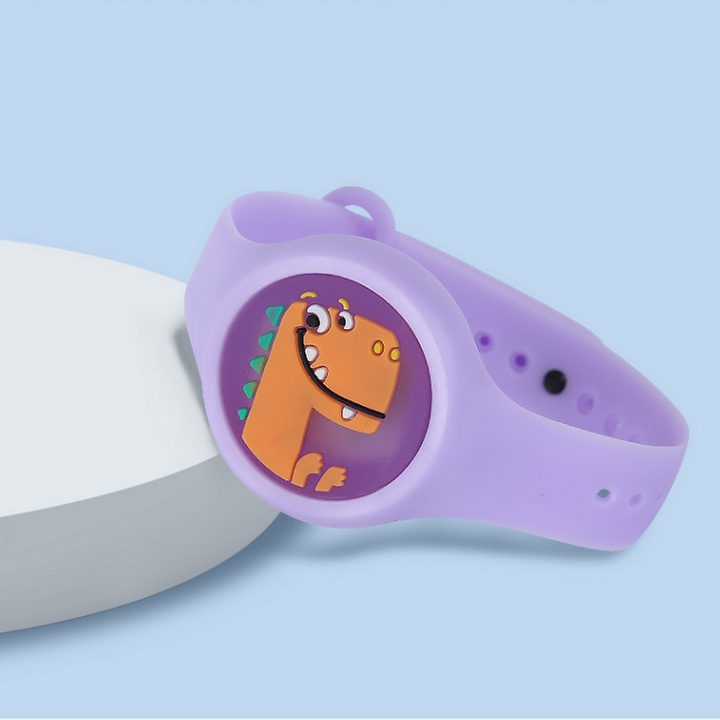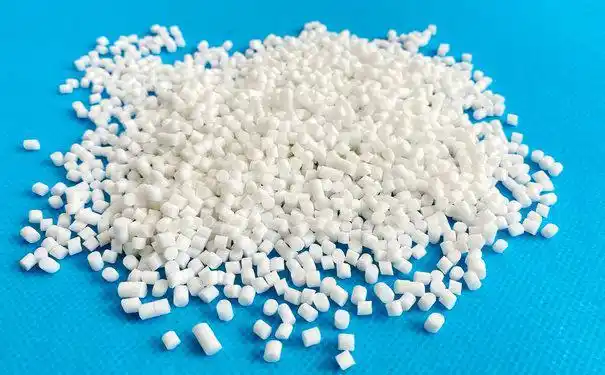As someone who’s spent years knee-deep in the world of polymers, working with everything from automotive parts to medical devices, I’ve come to see Thermoplastic Elastomers (TPEs) as one of the most exciting materials out there. Their ability to combine rubber-like elasticity with the ease of plastic processing makes them a go-to for countless applications. One question I often get from clients and colleagues is about the hardness of TPEs—specifically, how many hardness levels exist and what they mean for practical use. If you’re curious about TPE hardness and how it impacts your project, stick with me as I break it down in a way that’s clear, practical, and rooted in my real-world experience.

Why TPE Hardness Matters
Before diving into the specifics, let’s talk about why hardness is such a big deal with TPEs. Hardness determines how soft or rigid a material feels, which directly affects its performance in applications like grips, seals, or medical tubing. Too soft, and your product might not hold up under stress; too hard, and it could lose the flexibility that makes TPEs so special. Over the years, I’ve helped teams select the right TPE hardness for everything from comfy shoe soles to durable automotive seals, and it all starts with understanding the hardness scale.
TPEs are measured for hardness using the Shore hardness scale, a standard in the industry for elastomers and plastics. This scale ranges from super soft (like a gel) to nearly rigid, and TPEs can be formulated to hit just about any point on that spectrum. Let’s explore the hardness levels, how they’re categorized, and what they mean for your project.
Understanding the Shore Hardness Scale for TPEs
The Shore hardness scale is divided into different ranges, primarily Shore A and Shore D, with some ultra-soft TPEs measured on the Shore OO scale. Each scale is used for materials of different hardness levels, and TPEs typically span all three, depending on their formulation. Here’s a quick overview based on my experience working with manufacturers:
Shore OO: Ultra-soft materials, like gels or foam-like TPEs (0–100 Shore OO).
Shore A: Soft to medium-hard materials, covering most TPE applications (0–100 Shore A).
Shore D: Harder, more rigid materials, approaching the stiffness of plastics (0–100 Shore D).
TPEs are incredibly versatile because they can be engineered to hit specific hardness values within these ranges. For example, a TPE for a soft phone case might be 30 Shore A, while one for a tough conveyor belt might be 60 Shore D. Let’s break down the hardness levels and their applications.
TPE Hardness Levels and Their Applications
Based on my work with TPEs across industries, here’s how the hardness levels are typically categorized and used:
1. Ultra-Soft TPEs (0–50 Shore OO)
These are the squishiest TPEs, often described as gel-like or jelly-like. They’re so soft they’re measured on the Shore OO scale, which is reserved for materials that feel almost like a cushion.
Key Characteristics: Extremely pliable, highly elastic, and often transparent or translucent.
Applications: Medical gels, cushioning pads, and soft-touch components in wearables.
Examples: Think of the gel inserts in orthopedic shoes or the squishy pads in medical devices.
Pros: Exceptional comfort and flexibility.
Cons: Low strength and poor abrasion resistance.
I once worked with a medical device company that needed a gel-like TPE for a pressure-relief pad. We chose a 20 Shore OO TPE, which was soft enough to conform to the body but durable enough for repeated use. The challenge was ensuring it wouldn’t tear under stress, which required careful formulation.

2. Soft TPEs (0–40 Shore A)
Soft TPEs are still very flexible but have a bit more structure than ultra-soft gels. They’re measured on the Shore A scale and feel like soft rubber or silicone.
Key Characteristics: High elasticity, good tear resistance, and excellent for tactile surfaces.
Applications: Soft grips, seals, gaskets, and medical tubing.
Examples: The rubbery grip on a toothbrush or a flexible phone case.
Pros: Comfortable, easy to mold, and cost-effective.
Cons: Limited heat resistance and moderate strength.
In my early days consulting for a consumer electronics brand, we used a 30 Shore A TPE for a headphone earpad. It provided a soft, comfortable feel while maintaining enough durability to withstand daily use.
3. Medium-Soft TPEs (40–70 Shore A)
This is the sweet spot for many TPE applications, offering a balance of flexibility and strength. These TPEs feel like firm rubber and are widely used across industries.
Key Characteristics: Good balance of elasticity and durability, with decent heat and chemical resistance.
Applications: Automotive seals, overmolded grips, and flexible hoses.
Examples: Car door seals or the handle of a power tool.
Pros: Versatile, durable, and widely available.
Cons: May not be soft enough for comfort-driven applications.
I worked on a project for an automotive supplier who needed a seal that could flex but hold up under temperature swings. A 50 Shore A TPE was perfect—it was flexible enough to form a tight seal but tough enough to last years.
4. Medium-Hard TPEs (70–90 Shore A)
These TPEs start to feel more like firm plastics but still retain some elasticity. They’re ideal for applications needing more rigidity without sacrificing all flexibility.
Key Characteristics: Higher strength, good abrasion resistance, and moderate elasticity.
Applications: Footwear soles, industrial gaskets, and cable insulation.
Examples: The sole of a running shoe or a protective cover for electronics.
Pros: Durable and versatile for demanding applications.
Cons: Less flexible, which can limit comfort.
A client once asked for a TPE for a conveyor belt cover that needed to withstand abrasion but still flex slightly. We went with an 80 Shore A TPE, which hit the mark perfectly.

5. Hard TPEs (20–60 Shore D)
Hard TPEs are at the rigid end of the spectrum, approaching the stiffness of traditional plastics. They’re measured on the Shore D scale and used where strength is critical.
Key Characteristics: High strength, excellent abrasion resistance, and minimal elasticity.
Applications: Automotive bumpers, structural components, and rigid tubing.
Examples: Exterior automotive trim or industrial rollers.
Pros: Tough and long-lasting.
Cons: Limited flexibility and higher processing costs.
In one project, we used a 40 Shore D TPE for an automotive bumper component. It provided the rigidity needed to maintain shape while still offering enough give to absorb minor impacts.
TPE Hardness Levels: A Comparison Table
To make sense of these hardness levels, here’s a table summarizing their key properties and uses:
|
Hardness Range |
Key Characteristics |
Main Applications |
Typical TPE Type |
|---|---|---|---|
|
0–50 Shore OO |
Ultra-soft, gel-like |
Medical gels, cushions |
TPE-S, TPU |
|
0–40 Shore A |
Soft, highly elastic |
Grips, medical tubing |
TPE-S, TPU |
|
40–70 Shore A |
Balanced flexibility |
Seals, hoses |
TPE-S, TPV, TPU |
|
70–90 Shore A |
Firm, durable |
Footwear soles, cables |
TPU, TPC |
|
20–60 Shore D |
Rigid, strong |
Bumpers, structural parts |
TPO, TPC, TPU |
This table is a starting point, but the right hardness depends on your specific needs. In my experience, testing samples is the best way to ensure you’ve got the perfect fit.
Why Hardness Is Critical for TPE Selection
Choosing the right TPE hardness is about matching the material to your application’s demands. A soft TPE might be perfect for a comfortable grip but fail in a high-stress environment. Conversely, a hard TPE might be too rigid for a seal that needs to flex. Here’s what I’ve learned from years of working with TPEs:
Application Drives Hardness: For tactile surfaces, like a phone case, aim for 20–40 Shore A. For structural parts, like automotive trim, 20–40 Shore D might be better.
Environmental Factors: If your product faces heat or chemicals, harder TPEs (Shore A 70+ or Shore D) often perform better. I’ve seen soft TPEs degrade in harsh conditions, leading to costly replacements.
Processing Considerations: Softer TPEs are easier to mold, but ultra-soft grades (Shore OO) can be tricky to handle without specialized equipment. I once saw a production line stall because the team underestimated the challenges of processing a 10 Shore OO TPE.
My advice? Always define your project’s requirements—comfort, durability, environment—and work with a supplier to test different hardness levels. It’s worth the effort to avoid headaches later.

Real-World Stories: Hardness in Action
Let me share a couple of examples from my career to show how TPE hardness impacts real projects:
Soft TPE for Medical Cushions: A client needed a cushion for a medical device that would be in contact with skin for hours. We chose a 30 Shore OO TPE for its gel-like comfort, which patients loved. The challenge was ensuring it was durable enough for repeated cleaning, which we achieved with a custom formulation.
Medium-Hard TPE for Automotive Seals: An automotive manufacturer was dealing with seals that cracked in cold weather. We switched to a 60 Shore A TPV, which offered the right balance of flexibility and toughness, extending the seals’ lifespan significantly.
These stories highlight how the right hardness can make or break a product’s performance.
Challenges in Working with TPE Hardness
Selecting the right TPE hardness isn’t always straightforward. Here are some challenges I’ve encountered:
Balancing Comfort and Durability: Soft TPEs feel great but may wear out quickly. I’ve seen clients choose a 20 Shore A TPE for a grip, only to find it tore under stress.
Environmental Performance: Ultra-soft TPEs often struggle with heat or UV exposure. For outdoor applications, I’ve had to steer clients toward harder grades like 70 Shore A or higher.
Cost Considerations: Harder TPEs, like those in the Shore D range, can be more expensive to process. I’ve worked with budget-conscious clients who opted for medium-soft TPEs to save costs without sacrificing too much performance.
My tip? Start with a clear picture of your application’s needs and test multiple hardness levels before committing. It’s a small upfront investment that pays off in the long run.
The Future of TPE Hardness
Looking ahead, I’m excited about the advancements in TPE formulations. Manufacturers are developing TPEs with finer control over hardness, allowing for even more precise tailoring. For example, bio-based TPEs are emerging that maintain the same hardness ranges while being more sustainable. I’ve also seen growing interest in TPEs for 3D printing, where hardness can be adjusted layer by layer for complex designs.
In my conversations with industry peers, there’s a clear trend toward using TPEs in high-tech applications like wearable electronics and soft robotics, where precise hardness is critical. As these technologies evolve, I expect TPEs to play an even bigger role.

Wrapping It Up
TPEs are a remarkable material family, and their hardness levels—from ultra-soft gels to rigid plastics—offer endless possibilities. Whether you’re designing a cozy wearable or a tough automotive part, understanding TPE hardness is key to success. My years in the industry have taught me that the right hardness can transform a product, but it requires careful consideration of your project’s needs.
If you’re exploring TPEs, I recommend starting with a clear list of requirements and testing samples to find the perfect hardness. Working with a knowledgeable supplier or materials engineer can also make a huge difference. Here’s to finding the ideal TPE for your next big idea!
Related Questions and Answers
Q: How do I choose the right TPE hardness for my project?
A: Define your application’s needs—comfort, durability, or environmental resistance—and match them to the Shore hardness scale. For soft grips, aim for 20–40 Shore A; for structural parts, consider 20–40 Shore D. Testing samples is crucial.
Q: Are softer TPEs less durable?
A: Generally, yes. Ultra-soft TPEs (Shore OO or low Shore A) prioritize comfort but may wear out faster. Harder TPEs (high Shore A or Shore D) offer better durability but less flexibility.
Q: Can TPE hardness affect processing?
A: Absolutely. Ultra-soft TPEs can be tricky to mold without specialized equipment, while harder TPEs may require higher processing temperatures. Always consult with your manufacturer to ensure compatibility.
Q: Are TPEs with different hardness levels recyclable?
A: Most TPEs are recyclable, regardless of hardness. However, recycling processes may vary, so check with your supplier to confirm.
Q: What’s the best TPE hardness for outdoor use?
A: For outdoor applications, medium-hard to hard TPEs (70 Shore A or 20–40 Shore D) are ideal due to their UV and weather resistance. Softer TPEs may degrade faster in harsh conditions.





